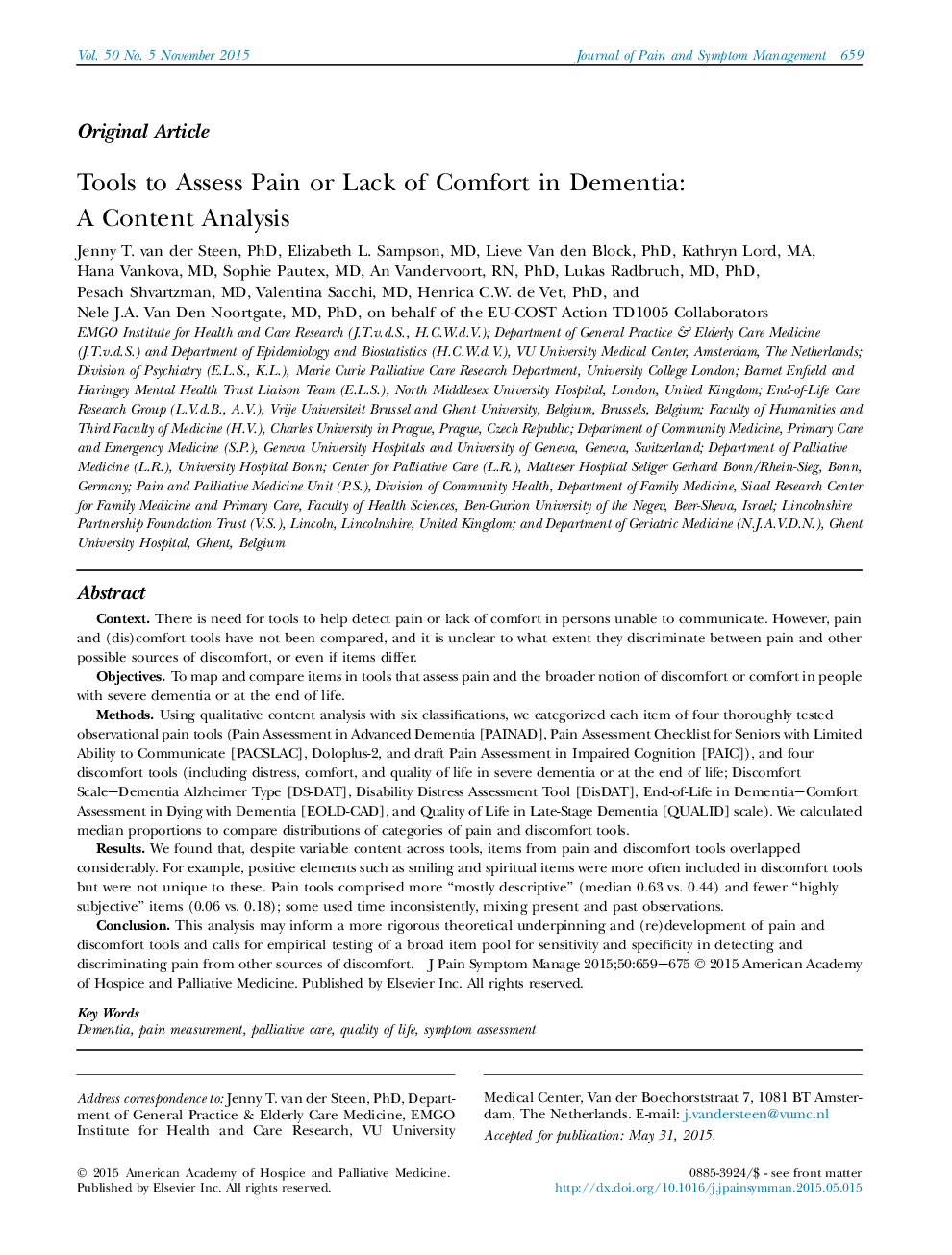| کد مقاله | کد نشریه | سال انتشار | مقاله انگلیسی | نسخه تمام متن |
|---|---|---|---|---|
| 5881320 | 1147784 | 2015 | 20 صفحه PDF | دانلود رایگان |
ContextThere is need for tools to help detect pain or lack of comfort in persons unable to communicate. However, pain and (dis)comfort tools have not been compared, and it is unclear to what extent they discriminate between pain and other possible sources of discomfort, or even if items differ.ObjectivesTo map and compare items in tools that assess pain and the broader notion of discomfort or comfort in people with severe dementia or at the end of life.MethodsUsing qualitative content analysis with six classifications, we categorized each item of four thoroughly tested observational pain tools (Pain Assessment in Advanced Dementia [PAINAD], Pain Assessment Checklist for Seniors with Limited Ability to Communicate [PACSLAC], Doloplus-2, and draft Pain Assessment in Impaired Cognition [PAIC]), and four discomfort tools (including distress, comfort, and quality of life in severe dementia or at the end of life; Discomfort Scale-Dementia Alzheimer Type [DS-DAT], Disability Distress Assessment Tool [DisDAT], End-of-Life in Dementia-Comfort Assessment in Dying with Dementia [EOLD-CAD], and Quality of Life in Late-Stage Dementia [QUALID] scale). We calculated median proportions to compare distributions of categories of pain and discomfort tools.ResultsWe found that, despite variable content across tools, items from pain and discomfort tools overlapped considerably. For example, positive elements such as smiling and spiritual items were more often included in discomfort tools but were not unique to these. Pain tools comprised more “mostly descriptive” (median 0.63 vs. 0.44) and fewer “highly subjective” items (0.06 vs. 0.18); some used time inconsistently, mixing present and past observations.ConclusionThis analysis may inform a more rigorous theoretical underpinning and (re)development of pain and discomfort tools and calls for empirical testing of a broad item pool for sensitivity and specificity in detecting and discriminating pain from other sources of discomfort.
Journal: Journal of Pain and Symptom Management - Volume 50, Issue 5, November 2015, Pages 659-675.e3
